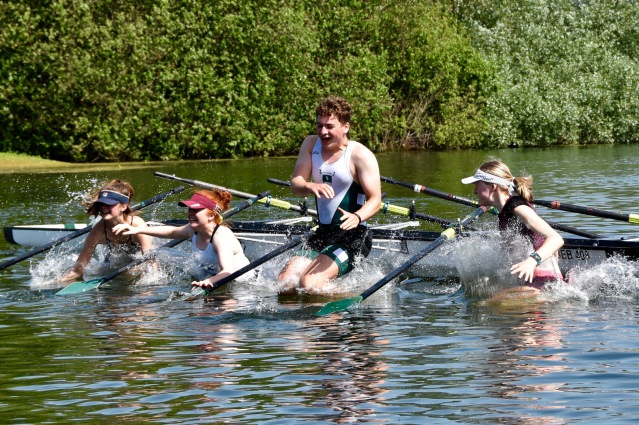
Capsizing: What to do
All members of the Club should ensure that they know what to do in the event of capsizing. The best way to ensure that you know what to do is to attend one of the regular Capsize Drills run by the Club. All single scullers are required to complete a mandatory Capsize Drill at least once every three years.
If it is you that has capsized, follow the CAPSIZE DRILL:
-
Having got free of the boat, stay with it (the boat is buoyant and will support you, it is also easy for rescuers to see).
-
Haul yourself over the upturned boat, or onto the bow or stern canvas, if the boat is right-side up. Even if only your trunk is out of the water, the rate of heat loss will reduce.
-
Lying on the boat like a surfboard, paddle the boat to shore.
-
If you are able to do so, you can (as an alternative) climb back into the boat and row to safety.Do not make more than two attempts to do this.You will become tired very quickly.
-
Never leave your boat and attempt to swim ashore unaided. A person in the water is in a potentially life threatening situation and all efforts must be made to ensure the safe rescue as soon as possible.
-
Use your mobile phone to call for assistance.Blow whistle (six short sharp blasts) to attract attention and repeat at intervals until help arrives, or you reach safety.
-
Once you reach landfall, or when assistance arrives, get warm and dry as soon as possible.
-
Be aware of the signs of Hypothermia – it is very important to stay awake, talk to yourself or sing. It may help rescuers locate you.
-
This British Rowing Video illustrates the Capsize Drill.
Hypothermia
In the winter months hypothermia can set in rapidly both in and out of the water, as little as 30 seconds in the water. It occurs when the body core temperature drops below 35 degrees C, (the normal is 37 degrees C). When this happens and the body is no longer able to maintain heat, non-essential body functions shut down progressively.
REMEMBER THE “ONE DEGREE ONE MINUTE” RULE – You are likely to have only one minute before the onset of hypothermia for every degree Celsius that the water is above freezing or zero degrees.
It is important to be able to recognise the signs and symptoms:
-
Unexpected coldness and tiredness possibly accompanied by unreasonable behaviour.
-
Physical and mental lethargy – difficulty in comprehending questions and instructions.
-
May exhibit burst of unexpected and violent energy or language and become uncooperative.
-
Slurring of speech.
-
Failure or abnormality of vision.
-
Rapid muscle twitching.
-
Decreased control of limbs.
-
Signs of shock with pallor and blueness of lips and nails – anoxia!
-
Slow and weak pulse, with wheezing and coughing.
Avoidance is far the better course - keep warm with extra layers of clothing and avoid taking risks particularly in winter.
Remember to report any capsizes, however trivial via the British Rowing Online Incident Reporting System.
-
